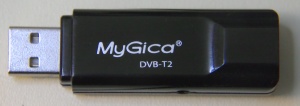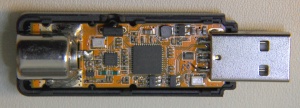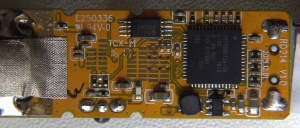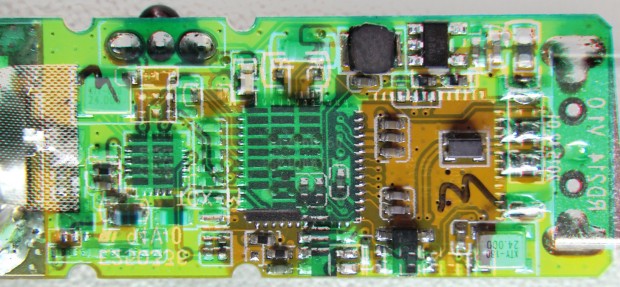As DVB-T(1) is phased out in Germany soon, I got me a new DVB-T2 stick. The MyGica T230 is supported under Linux, and has a quite low price (~20€).
Instead of the expected T230, I received a T230C which has silently replaced the T230. The T230C is – although quite similar to the T230 – currently (Linux 4.10rc2) not supported by the mainline kernel.
Compared to the T230, the T230C uses the same Cypress FX2 CY7C68013A USB bridge chip, a Silabs Si2168-D60 demodulator (new revision) and a new tuner chip, Silabs Si2141-A10 (T230 uses a Si2157).
Beyond the bridge/RF chips, there is an I2C eeprom (FX2 firmware?), two LowPowerSemi adjustable, synchronous DC/DC buck converters (marking LPS A36j1, LP3202?), a 74ACT1G00 NAND gate (marking A00), two 24MHz oscillators and a bunch of passives.





Any luck getting this to work on Linux 4.10?
I’ve tried your provided patches (https://patchwork.linuxtv.org/project/linux-media/list/?submitter=7094), but so far no front-end will attach:
[ 2.715033] usb 1-1: dvb_usb_v2: found a ‚MyGica Mini DVB-T2 USB Stick T230C‘ in warm state
[ 2.715074] usb 1-1: dvb_usb_v2: will pass the complete MPEG2 transport stream to the software demuxer
[ 2.715093] dvbdev: DVB: registering new adapter (MyGica Mini DVB-T2 USB Stick T230C)
[ 2.745931] usbcore: registered new interface driver dvb_usb_dvbsky
[ 3.084074] random: crng init done
[ 552.891607] media: Linux media interface: v0.10
Thanks!
Yes, its working for me. You may be missing the support for the Si2168-D60, see Patchwork (all states).
Also make sure you have the required FW files for both Si2168-D60 and Si2141-A10.
Indeed forgot to use all three patches.
Thanks man! Great work! :D
Could you also take a look at the older T230 version?
This is also seems to be broken on Linux 4.10. :/
I have submitted some fixes for the cxusb driver (which is responsible for the old T230), these were accepted for 4.11-rc1. „[media] cxusb: Use a dma capable buffer also for reading“ should be the one relevant for you.
Small Heads-Up:
All required changes went into 4.12rc1, so next mainline kernel should support the T230C out-of-the-box.
Has any of you tried it with DVB-C (MPEG4) I do get a signal, but also lots of artifacts so I can’t really watch anything. Running it from Windows doesn’t give me this problem.
http://imgur.com/a/2ulWk
DVB-C signals are much stronger than DVB-T signals, so you might overdrive the input amplifier. If overdriving is the problem, an attenuator would mitigate the problem.
Even better would be to eavesdrop the commands the windows driver is doing to adjust the frontend. This can be achieved in two ways:
1. Running windows in a VM on a Linux host, using usbmon/Wireshark to trace the USB traffic.
2. Connecting a logic analyzer to the I2C signals on the board.
@Lars Nørgaard – Thought that I was the only one – the T230 is completely broken now, I’m also unable to scan any muxes for services because they all fail.
Think it’s a hard brick, because downgrading doesn’t help at all.
T230 or T230C? DVB-T or DVB-C? Which kernel version? Any kernel log messages?